Make Up For Ever Blue Artist Color Shadows Reviews, Photos, Swatches
D206 Celestial Blue
Make Up For Ever D206 Celestial Blue Artist Color Shadow ($17.00 for 0.08 oz.) is a light, sky blue with subtle, cool undertones and a sparkling, metallic finish. It had semi-opaque pigmentation that applied decently but had a tendency to go on a bit unevenly if I wasn’t careful. It was better with a dampened brush primer didn’t improve the application. It could have blended out better along the edges better, too. On me, it lasted for nine hours but had fallout.
The previous version of this shade was lighter and a bit smoother, but it wasn’t particular great before either (see side-by-side comparison).
FURTHER READING: Formula Overview for details on general performance and characteristics (like scent).
Top Dupes
- Terra Moons Rhea (P, $8.50) is more shimmery, darker (95% similar).
- Make Up For Ever D206 Celestial Blue (DC, $21.00) is less shimmery, warmer (95% similar).
- Pat McGrath Aquarian Dream (LE, $25.00) is less shimmery, darker (95% similar).
- ColourPop Mavs (LE, $4.50) is less shimmery, lighter (90% similar).
- Sugarpill Cloud 9 (PiP, $13.00) is less shimmery, lighter, warmer (90% similar).
- Give Me Glow Break the Ice (P, $7.00) is more shimmery, cooler (90% similar).
- Buxom Schmooze (P, $12.00) is darker (90% similar).
- Maybelline Icy Mint (LE, $6.99) is less shimmery, cooler (90% similar).
- Giorgio Armani Jade (03) (DC, $39.00) is less shimmery, darker (90% similar).
- City Color Breezy (P, $6.99) (90% similar).
Formula Overview
$17.00/0.08 oz. - $212.50 Per Ounce
The original Artist Shadow formula had a creamier, slightly softer, and thicker feel for finishes like Metallic, Iridescent, and Satin, while I felt the original Diamond finish was denser/thicker (heavier almost) and the Matte finish was more powdery but similar in softness and pigmentation (I did not find the original Mattes to be ultra pigmented across the board--semi-opaque to opaque, buildable, which you can see in my original swatches here). By and large, I found the formula to be easy to work with and did not have to spend a lot of time blending or fussing with the shades on the lid.
The new Matte formula has a smoother consistency that has more slip to the touch with less powderiness in the pan, but the pigmentation did seem slightly weaker on average compared to the original formula. The pigmentation of the new Matte formula was still semi-opaque to opaque and buildable but I felt like there were just more shades that were closer to semi-opaque than to opaque.
However, shades like M402 Mimosa showed improvement, as it used to be a Satin (see here) and not as easy to work with due to the denser texture. A lot of the shades were similar in color between the formulas, but there were a few that were not (M546 Dark Purple Taupe was a shade with more significant changes; the new version is warmer and lighter).
Overall, I did not have any issues applying most of the matte shades to the lid, blending them out, or building up coverage. They lasted between nine and ten hours on me, which was actually a bit longer (on average) compared to the original formula, where the mattes tended to wear between seven and eight hours on me (without primer).
The new Satin formula was the most different; it had weaker pigmentation, felt denser and drier with less give and creaminess. In practice, I did not feel like application was harder or noticeably different other than feeling like more of the shades required two layers for more opaque coverage, though some of the more neutral shades were fairly pigmented in a single layer. I also noticed that this particular finish seemed to be the most culled; there weren't that many shades in it, and I wonder if they did not sell well or something about the finish is harder to produce.
There were significant differences in color (and/or undertone) between shades in the new formula and old formula (with the same names) within this finish, too, where most were different rather than only a handful being different. The pigmentation of the new Satin formula was typically semi-opaque and buildable, while they applied evenly, blended out without much effort, and lasted between eight and ten hours (without primer).
The new Iridescent formula was the second most different and more comparable to the Satin finish in terms of overall feel and performance, just with larger shimmer/micro-sparkle. The new formula has a denser consistency (almost "drier" and with less slip) and didn't feel as cream-like, but the powder seemed to pickup better with most brushes and was more consistent in the actual finish--pearly with sparkle--whereas the original formula varied more heavily between pearly and metallic, sparkle and finer shimmer.
There were, however, more substantial color and undertone differences between old and new within this formula, like I saw with the Satin formula. Overall, I did not experience any significant issues applying most of the shades to the lid--they were semi-opaque to opaque, fairly buildable, blendable, and long-wearing (eight to ten hours).
The new Metallic formula was the most consistent between old and new for overall feel, performance, and color. There were, of course, a few shades that seemed lighter/darker, cooler/warmer compared to the previous versions, and all those notes will be made within the respective shade's review. I think the new Metallic finish has a more flattering look on the lid, as the consistency wasn't quite as thick, which should make it apply and appear smoother on the lid for more people.
There were several shades that seemed slightly deeper or less reflective, while others were as reflective as past versions. The majority of the shades of this finish were very pigmented with a moderately dense, lightly creamy texture that blended out well on the lid and wore between nine and ten hours on me.
The new Diamond finish was noticeably less dense/thick, particularly on the lid, which did make it easier to spread across a larger area and easier to pickup with more types of brushes. I was worried that there would be more fallout, but I haven't noticeable much fallout with the new Diamond shades over the eight to ten hours they last for.
Most of them had good pigmentation, though there were a few that were weaker (medium to semi-opaque coverage); a shade like D410 Gold Nugget was a weaker shade before and still is while D326 Lagoon Blue is significantly less pigmented in the new formula.
As I typically do with new eyeshadow formulas, I tested a few shades from each finish over various primers, as I like to see how new formulas interact with different types of primers and if there are any unexpected consequences of using primers (I felt that some of the more silicone-heavy Artist Shadows from before actually applied better without primer).
I didn't notice any ill effects of using primers like Smashbox 24-Hour, Marc Jacobs Coconut Eye Primer, Too Faced Shadow Insurance, or Urban Decay Primer Potion. They all seemed to just help with wear, and with some of the shades that felt drier or had weaker pigmentation, the use of primer seemed to improve initial coverage levels, too.
Browse all of our Make Up For Ever Artist Color Shadow swatches.
Ingredients

D206 Celestial Blue
PPermanent. $17.00.
ME232 Turquoise Blue
Make Up For Ever ME232 Turquoise Blue Artist Color Shadow ($17.00 for 0.08 oz.) is a bright, medium blue-teal with cool undertones and a metallic sheen. The color payoff was completely opaque in a single layer, and a little went a long way. The consistency was smooth, lightly creamy, and dense without being stiff or thick. It applied well to bare skin and wore well for 10 hours on me with minimal fading.
It’s slightly deeper than the previous version but they were close in color (see side-by-side comparison).
FURTHER READING: Formula Overview for details on general performance and characteristics (like scent).
Top Dupes
- Make Up For Ever ME232 Turquoise Blue (DC, $21.00) is darker (95% similar).
- Juvia's Place Zola (P, ) is darker, cooler (90% similar).
- ColourPop Princess Morbucks (LE, $6.00) is lighter, cooler (90% similar).
- Urban Decay Double Dip (LE, $19.00) is lighter, more muted (90% similar).
- Huda Beauty Electric #8 (PiP, ) is more shimmery, lighter (90% similar).
- Anastasia Leo (LE, $12.00) is lighter, cooler (90% similar).
- Glaminatrix High Seas (P, $8.04) is less shimmery, cooler (90% similar).
- Fenty Beauty Evil Genie (PiP, ) is darker, more muted (85% similar).
- Buxom Schmooze (P, $12.00) is lighter (85% similar).
- Juvia's Place Berber (P, ) is more shimmery, darker, cooler (85% similar).
Formula Overview
$17.00/0.08 oz. - $212.50 Per Ounce
The original Artist Shadow formula had a creamier, slightly softer, and thicker feel for finishes like Metallic, Iridescent, and Satin, while I felt the original Diamond finish was denser/thicker (heavier almost) and the Matte finish was more powdery but similar in softness and pigmentation (I did not find the original Mattes to be ultra pigmented across the board--semi-opaque to opaque, buildable, which you can see in my original swatches here). By and large, I found the formula to be easy to work with and did not have to spend a lot of time blending or fussing with the shades on the lid.
The new Matte formula has a smoother consistency that has more slip to the touch with less powderiness in the pan, but the pigmentation did seem slightly weaker on average compared to the original formula. The pigmentation of the new Matte formula was still semi-opaque to opaque and buildable but I felt like there were just more shades that were closer to semi-opaque than to opaque.
However, shades like M402 Mimosa showed improvement, as it used to be a Satin (see here) and not as easy to work with due to the denser texture. A lot of the shades were similar in color between the formulas, but there were a few that were not (M546 Dark Purple Taupe was a shade with more significant changes; the new version is warmer and lighter).
Overall, I did not have any issues applying most of the matte shades to the lid, blending them out, or building up coverage. They lasted between nine and ten hours on me, which was actually a bit longer (on average) compared to the original formula, where the mattes tended to wear between seven and eight hours on me (without primer).
The new Satin formula was the most different; it had weaker pigmentation, felt denser and drier with less give and creaminess. In practice, I did not feel like application was harder or noticeably different other than feeling like more of the shades required two layers for more opaque coverage, though some of the more neutral shades were fairly pigmented in a single layer. I also noticed that this particular finish seemed to be the most culled; there weren't that many shades in it, and I wonder if they did not sell well or something about the finish is harder to produce.
There were significant differences in color (and/or undertone) between shades in the new formula and old formula (with the same names) within this finish, too, where most were different rather than only a handful being different. The pigmentation of the new Satin formula was typically semi-opaque and buildable, while they applied evenly, blended out without much effort, and lasted between eight and ten hours (without primer).
The new Iridescent formula was the second most different and more comparable to the Satin finish in terms of overall feel and performance, just with larger shimmer/micro-sparkle. The new formula has a denser consistency (almost "drier" and with less slip) and didn't feel as cream-like, but the powder seemed to pickup better with most brushes and was more consistent in the actual finish--pearly with sparkle--whereas the original formula varied more heavily between pearly and metallic, sparkle and finer shimmer.
There were, however, more substantial color and undertone differences between old and new within this formula, like I saw with the Satin formula. Overall, I did not experience any significant issues applying most of the shades to the lid--they were semi-opaque to opaque, fairly buildable, blendable, and long-wearing (eight to ten hours).
The new Metallic formula was the most consistent between old and new for overall feel, performance, and color. There were, of course, a few shades that seemed lighter/darker, cooler/warmer compared to the previous versions, and all those notes will be made within the respective shade's review. I think the new Metallic finish has a more flattering look on the lid, as the consistency wasn't quite as thick, which should make it apply and appear smoother on the lid for more people.
There were several shades that seemed slightly deeper or less reflective, while others were as reflective as past versions. The majority of the shades of this finish were very pigmented with a moderately dense, lightly creamy texture that blended out well on the lid and wore between nine and ten hours on me.
The new Diamond finish was noticeably less dense/thick, particularly on the lid, which did make it easier to spread across a larger area and easier to pickup with more types of brushes. I was worried that there would be more fallout, but I haven't noticeable much fallout with the new Diamond shades over the eight to ten hours they last for.
Most of them had good pigmentation, though there were a few that were weaker (medium to semi-opaque coverage); a shade like D410 Gold Nugget was a weaker shade before and still is while D326 Lagoon Blue is significantly less pigmented in the new formula.
As I typically do with new eyeshadow formulas, I tested a few shades from each finish over various primers, as I like to see how new formulas interact with different types of primers and if there are any unexpected consequences of using primers (I felt that some of the more silicone-heavy Artist Shadows from before actually applied better without primer).
I didn't notice any ill effects of using primers like Smashbox 24-Hour, Marc Jacobs Coconut Eye Primer, Too Faced Shadow Insurance, or Urban Decay Primer Potion. They all seemed to just help with wear, and with some of the shades that felt drier or had weaker pigmentation, the use of primer seemed to improve initial coverage levels, too.
Browse all of our Make Up For Ever Artist Color Shadow swatches.
Ingredients

ME232 Turquoise Blue
DCDiscontinued. $17.00.
ME216 Electric Blue
Make Up For Ever ME216 Electric Blue Artist Color Shadow ($17.00 for 0.08 oz.) is a bright, medium blue with strong, cool undertones and a pearly sheen. It read more pearl than metallic in finish on the lid, especially as I blended out the edges. It had nearly opaque pigmentation with a moderately dense consistency that was a bit creamy but could have been softer and easier to pick up with a brush. With the right technique and tools, it became easy to use, but the previous formula was just easier to work with to begin with. It stayed on well for nine and a half hours on me before creasing faintly.
It’s not quite as cool-toned as the previous version, so they did not appear as similar as you might expect (see side-by-side comparison).
FURTHER READING: Formula Overview for details on general performance and characteristics (like scent).
Top Dupes
- ColourPop Two Piece (P, $4.50) is brighter (95% similar).
- Fenty Beauty Midnight Bolt (LE, ) is more shimmery (95% similar).
- ColourPop Big Apple (LE, $4.50) is less shimmery, cooler (95% similar).
- ColourPop Mad About U (PiP, $4.50) is less shimmery, lighter (95% similar).
- ColourPop Tiara (PiP, $4.50) is less shimmery, lighter (95% similar).
- KVD Beauty Nebula (DC, $21.00) is darker (90% similar).
- Natasha Denona Electrick (364M) (LE, $29.00) is less shimmery, darker (90% similar).
- Sydney Grace Waterfalls (PiP, $6.25) is lighter (90% similar).
- Melt Cosmetics King Stud (PiP, ) is darker, cooler (90% similar).
- MAC Weirdly Wonderful (LE, $17.00) is darker, cooler (90% similar).
Formula Overview
$17.00/0.08 oz. - $212.50 Per Ounce
The original Artist Shadow formula had a creamier, slightly softer, and thicker feel for finishes like Metallic, Iridescent, and Satin, while I felt the original Diamond finish was denser/thicker (heavier almost) and the Matte finish was more powdery but similar in softness and pigmentation (I did not find the original Mattes to be ultra pigmented across the board--semi-opaque to opaque, buildable, which you can see in my original swatches here). By and large, I found the formula to be easy to work with and did not have to spend a lot of time blending or fussing with the shades on the lid.
The new Matte formula has a smoother consistency that has more slip to the touch with less powderiness in the pan, but the pigmentation did seem slightly weaker on average compared to the original formula. The pigmentation of the new Matte formula was still semi-opaque to opaque and buildable but I felt like there were just more shades that were closer to semi-opaque than to opaque.
However, shades like M402 Mimosa showed improvement, as it used to be a Satin (see here) and not as easy to work with due to the denser texture. A lot of the shades were similar in color between the formulas, but there were a few that were not (M546 Dark Purple Taupe was a shade with more significant changes; the new version is warmer and lighter).
Overall, I did not have any issues applying most of the matte shades to the lid, blending them out, or building up coverage. They lasted between nine and ten hours on me, which was actually a bit longer (on average) compared to the original formula, where the mattes tended to wear between seven and eight hours on me (without primer).
The new Satin formula was the most different; it had weaker pigmentation, felt denser and drier with less give and creaminess. In practice, I did not feel like application was harder or noticeably different other than feeling like more of the shades required two layers for more opaque coverage, though some of the more neutral shades were fairly pigmented in a single layer. I also noticed that this particular finish seemed to be the most culled; there weren't that many shades in it, and I wonder if they did not sell well or something about the finish is harder to produce.
There were significant differences in color (and/or undertone) between shades in the new formula and old formula (with the same names) within this finish, too, where most were different rather than only a handful being different. The pigmentation of the new Satin formula was typically semi-opaque and buildable, while they applied evenly, blended out without much effort, and lasted between eight and ten hours (without primer).
The new Iridescent formula was the second most different and more comparable to the Satin finish in terms of overall feel and performance, just with larger shimmer/micro-sparkle. The new formula has a denser consistency (almost "drier" and with less slip) and didn't feel as cream-like, but the powder seemed to pickup better with most brushes and was more consistent in the actual finish--pearly with sparkle--whereas the original formula varied more heavily between pearly and metallic, sparkle and finer shimmer.
There were, however, more substantial color and undertone differences between old and new within this formula, like I saw with the Satin formula. Overall, I did not experience any significant issues applying most of the shades to the lid--they were semi-opaque to opaque, fairly buildable, blendable, and long-wearing (eight to ten hours).
The new Metallic formula was the most consistent between old and new for overall feel, performance, and color. There were, of course, a few shades that seemed lighter/darker, cooler/warmer compared to the previous versions, and all those notes will be made within the respective shade's review. I think the new Metallic finish has a more flattering look on the lid, as the consistency wasn't quite as thick, which should make it apply and appear smoother on the lid for more people.
There were several shades that seemed slightly deeper or less reflective, while others were as reflective as past versions. The majority of the shades of this finish were very pigmented with a moderately dense, lightly creamy texture that blended out well on the lid and wore between nine and ten hours on me.
The new Diamond finish was noticeably less dense/thick, particularly on the lid, which did make it easier to spread across a larger area and easier to pickup with more types of brushes. I was worried that there would be more fallout, but I haven't noticeable much fallout with the new Diamond shades over the eight to ten hours they last for.
Most of them had good pigmentation, though there were a few that were weaker (medium to semi-opaque coverage); a shade like D410 Gold Nugget was a weaker shade before and still is while D326 Lagoon Blue is significantly less pigmented in the new formula.
As I typically do with new eyeshadow formulas, I tested a few shades from each finish over various primers, as I like to see how new formulas interact with different types of primers and if there are any unexpected consequences of using primers (I felt that some of the more silicone-heavy Artist Shadows from before actually applied better without primer).
I didn't notice any ill effects of using primers like Smashbox 24-Hour, Marc Jacobs Coconut Eye Primer, Too Faced Shadow Insurance, or Urban Decay Primer Potion. They all seemed to just help with wear, and with some of the shades that felt drier or had weaker pigmentation, the use of primer seemed to improve initial coverage levels, too.
Browse all of our Make Up For Ever Artist Color Shadow swatches.
Ingredients

ME216 Electric Blue
PPermanent. $17.00.
I220 Sapphire
Make Up For Ever I220 Sapphire Artist Color Shadow ($17.00 for 0.08 oz.) is a dark blue with cool undertones and a pearly sheen. It was richly pigmented with a denser, stiffer texture that required more pressure/firmer brush to pick up product evenly. The color applied nicely to my lid and blended out better than I expected but could have yielded more easily. It wore well for nine and a half hours on me before fading.
It’s lighter and brighter than the previous version, and it has a slightly “warmer” undertone (but still a blue… so still cool-toned) (see side-by-side comparison).
FURTHER READING: Formula Overview for details on general performance and characteristics (like scent).
Top Dupes
- ColourPop Luckfully (P, $6.00) is less shimmery, cooler (90% similar).
- Urban Decay TRM (LE, $19.00) is brighter (90% similar).
- Natasha Denona Blue Spruce (02M) (PiP, $29.00) is darker, cooler (90% similar).
- BH Cosmetics Foil Eyes 2 #24 (PiP, ) is more shimmery, lighter (90% similar).
- KVD Beauty Ministry (LE, ) is darker, cooler (90% similar).
- KVD Beauty Estrella (LE, ) is darker, cooler (90% similar).
- MAC Blue Black (LE, $17.00) is cooler (90% similar).
- Le Metier de Beaute Lapis (P, $30.00) is warmer (90% similar).
- Viseart Bijoux Royal #8 (LE, ) is more shimmery, warmer (90% similar).
- Tarte Dark Seas (P, $14.00) is more shimmery, cooler (90% similar).
Formula Overview
$17.00/0.08 oz. - $212.50 Per Ounce
The original Artist Shadow formula had a creamier, slightly softer, and thicker feel for finishes like Metallic, Iridescent, and Satin, while I felt the original Diamond finish was denser/thicker (heavier almost) and the Matte finish was more powdery but similar in softness and pigmentation (I did not find the original Mattes to be ultra pigmented across the board--semi-opaque to opaque, buildable, which you can see in my original swatches here). By and large, I found the formula to be easy to work with and did not have to spend a lot of time blending or fussing with the shades on the lid.
The new Matte formula has a smoother consistency that has more slip to the touch with less powderiness in the pan, but the pigmentation did seem slightly weaker on average compared to the original formula. The pigmentation of the new Matte formula was still semi-opaque to opaque and buildable but I felt like there were just more shades that were closer to semi-opaque than to opaque.
However, shades like M402 Mimosa showed improvement, as it used to be a Satin (see here) and not as easy to work with due to the denser texture. A lot of the shades were similar in color between the formulas, but there were a few that were not (M546 Dark Purple Taupe was a shade with more significant changes; the new version is warmer and lighter).
Overall, I did not have any issues applying most of the matte shades to the lid, blending them out, or building up coverage. They lasted between nine and ten hours on me, which was actually a bit longer (on average) compared to the original formula, where the mattes tended to wear between seven and eight hours on me (without primer).
The new Satin formula was the most different; it had weaker pigmentation, felt denser and drier with less give and creaminess. In practice, I did not feel like application was harder or noticeably different other than feeling like more of the shades required two layers for more opaque coverage, though some of the more neutral shades were fairly pigmented in a single layer. I also noticed that this particular finish seemed to be the most culled; there weren't that many shades in it, and I wonder if they did not sell well or something about the finish is harder to produce.
There were significant differences in color (and/or undertone) between shades in the new formula and old formula (with the same names) within this finish, too, where most were different rather than only a handful being different. The pigmentation of the new Satin formula was typically semi-opaque and buildable, while they applied evenly, blended out without much effort, and lasted between eight and ten hours (without primer).
The new Iridescent formula was the second most different and more comparable to the Satin finish in terms of overall feel and performance, just with larger shimmer/micro-sparkle. The new formula has a denser consistency (almost "drier" and with less slip) and didn't feel as cream-like, but the powder seemed to pickup better with most brushes and was more consistent in the actual finish--pearly with sparkle--whereas the original formula varied more heavily between pearly and metallic, sparkle and finer shimmer.
There were, however, more substantial color and undertone differences between old and new within this formula, like I saw with the Satin formula. Overall, I did not experience any significant issues applying most of the shades to the lid--they were semi-opaque to opaque, fairly buildable, blendable, and long-wearing (eight to ten hours).
The new Metallic formula was the most consistent between old and new for overall feel, performance, and color. There were, of course, a few shades that seemed lighter/darker, cooler/warmer compared to the previous versions, and all those notes will be made within the respective shade's review. I think the new Metallic finish has a more flattering look on the lid, as the consistency wasn't quite as thick, which should make it apply and appear smoother on the lid for more people.
There were several shades that seemed slightly deeper or less reflective, while others were as reflective as past versions. The majority of the shades of this finish were very pigmented with a moderately dense, lightly creamy texture that blended out well on the lid and wore between nine and ten hours on me.
The new Diamond finish was noticeably less dense/thick, particularly on the lid, which did make it easier to spread across a larger area and easier to pickup with more types of brushes. I was worried that there would be more fallout, but I haven't noticeable much fallout with the new Diamond shades over the eight to ten hours they last for.
Most of them had good pigmentation, though there were a few that were weaker (medium to semi-opaque coverage); a shade like D410 Gold Nugget was a weaker shade before and still is while D326 Lagoon Blue is significantly less pigmented in the new formula.
As I typically do with new eyeshadow formulas, I tested a few shades from each finish over various primers, as I like to see how new formulas interact with different types of primers and if there are any unexpected consequences of using primers (I felt that some of the more silicone-heavy Artist Shadows from before actually applied better without primer).
I didn't notice any ill effects of using primers like Smashbox 24-Hour, Marc Jacobs Coconut Eye Primer, Too Faced Shadow Insurance, or Urban Decay Primer Potion. They all seemed to just help with wear, and with some of the shades that felt drier or had weaker pigmentation, the use of primer seemed to improve initial coverage levels, too.
Browse all of our Make Up For Ever Artist Color Shadow swatches.
Ingredients

I220 Sapphire
PPermanent. $17.00.
ME224 Navy Blue
Make Up For Ever ME224 Navy Blue Artist Color Shadow ($17.00 for 0.08 oz.) is a deep, navy blue with strong, cool undertones and a pearly sheen. It had opaque color payoff in one layer, while the texture was dense, not too firm, and smooth to the touch. I had not rouble applying or blending out this shade on my lid. It stayed on well for nine and a half hours on me.
The new version is brighter and cooler in undertone (see side-by-side comparison).
FURTHER READING: Formula Overview for details on general performance and characteristics (like scent).
Top Dupes
- Tom Ford Beauty TFX9 (LE, $36.00) is lighter (95% similar).
- ColourPop Lucid Dream (LE, $6.00) is darker (95% similar).
- Melt Cosmetics Catrina (PiP, ) is darker, warmer (95% similar).
- Sydney Grace Rendezvous (DC, $8.00) is lighter (90% similar).
- Milani Bella Navy (09) (P, $4.49) is less shimmery, darker (90% similar).
- KVD Beauty Ministry (LE, ) is lighter (90% similar).
- NARS Dark Rite (P, $24.00) is less shimmery, darker (90% similar).
- Urban Decay Paralyzed (LE, $19.00) is lighter, cooler (90% similar).
- Urban Decay Danger (LE, $19.00) is lighter, cooler (90% similar).
- MAC Lunar (P, $20.00) is more shimmery (90% similar).
Formula Overview
$17.00/0.08 oz. - $212.50 Per Ounce
The original Artist Shadow formula had a creamier, slightly softer, and thicker feel for finishes like Metallic, Iridescent, and Satin, while I felt the original Diamond finish was denser/thicker (heavier almost) and the Matte finish was more powdery but similar in softness and pigmentation (I did not find the original Mattes to be ultra pigmented across the board--semi-opaque to opaque, buildable, which you can see in my original swatches here). By and large, I found the formula to be easy to work with and did not have to spend a lot of time blending or fussing with the shades on the lid.
The new Matte formula has a smoother consistency that has more slip to the touch with less powderiness in the pan, but the pigmentation did seem slightly weaker on average compared to the original formula. The pigmentation of the new Matte formula was still semi-opaque to opaque and buildable but I felt like there were just more shades that were closer to semi-opaque than to opaque.
However, shades like M402 Mimosa showed improvement, as it used to be a Satin (see here) and not as easy to work with due to the denser texture. A lot of the shades were similar in color between the formulas, but there were a few that were not (M546 Dark Purple Taupe was a shade with more significant changes; the new version is warmer and lighter).
Overall, I did not have any issues applying most of the matte shades to the lid, blending them out, or building up coverage. They lasted between nine and ten hours on me, which was actually a bit longer (on average) compared to the original formula, where the mattes tended to wear between seven and eight hours on me (without primer).
The new Satin formula was the most different; it had weaker pigmentation, felt denser and drier with less give and creaminess. In practice, I did not feel like application was harder or noticeably different other than feeling like more of the shades required two layers for more opaque coverage, though some of the more neutral shades were fairly pigmented in a single layer. I also noticed that this particular finish seemed to be the most culled; there weren't that many shades in it, and I wonder if they did not sell well or something about the finish is harder to produce.
There were significant differences in color (and/or undertone) between shades in the new formula and old formula (with the same names) within this finish, too, where most were different rather than only a handful being different. The pigmentation of the new Satin formula was typically semi-opaque and buildable, while they applied evenly, blended out without much effort, and lasted between eight and ten hours (without primer).
The new Iridescent formula was the second most different and more comparable to the Satin finish in terms of overall feel and performance, just with larger shimmer/micro-sparkle. The new formula has a denser consistency (almost "drier" and with less slip) and didn't feel as cream-like, but the powder seemed to pickup better with most brushes and was more consistent in the actual finish--pearly with sparkle--whereas the original formula varied more heavily between pearly and metallic, sparkle and finer shimmer.
There were, however, more substantial color and undertone differences between old and new within this formula, like I saw with the Satin formula. Overall, I did not experience any significant issues applying most of the shades to the lid--they were semi-opaque to opaque, fairly buildable, blendable, and long-wearing (eight to ten hours).
The new Metallic formula was the most consistent between old and new for overall feel, performance, and color. There were, of course, a few shades that seemed lighter/darker, cooler/warmer compared to the previous versions, and all those notes will be made within the respective shade's review. I think the new Metallic finish has a more flattering look on the lid, as the consistency wasn't quite as thick, which should make it apply and appear smoother on the lid for more people.
There were several shades that seemed slightly deeper or less reflective, while others were as reflective as past versions. The majority of the shades of this finish were very pigmented with a moderately dense, lightly creamy texture that blended out well on the lid and wore between nine and ten hours on me.
The new Diamond finish was noticeably less dense/thick, particularly on the lid, which did make it easier to spread across a larger area and easier to pickup with more types of brushes. I was worried that there would be more fallout, but I haven't noticeable much fallout with the new Diamond shades over the eight to ten hours they last for.
Most of them had good pigmentation, though there were a few that were weaker (medium to semi-opaque coverage); a shade like D410 Gold Nugget was a weaker shade before and still is while D326 Lagoon Blue is significantly less pigmented in the new formula.
As I typically do with new eyeshadow formulas, I tested a few shades from each finish over various primers, as I like to see how new formulas interact with different types of primers and if there are any unexpected consequences of using primers (I felt that some of the more silicone-heavy Artist Shadows from before actually applied better without primer).
I didn't notice any ill effects of using primers like Smashbox 24-Hour, Marc Jacobs Coconut Eye Primer, Too Faced Shadow Insurance, or Urban Decay Primer Potion. They all seemed to just help with wear, and with some of the shades that felt drier or had weaker pigmentation, the use of primer seemed to improve initial coverage levels, too.
Browse all of our Make Up For Ever Artist Color Shadow swatches.
Ingredients

ME224 Navy Blue
PPermanent. $17.00.
I210 Light Turquoise
Make Up For Ever I210 Light Turquoise Artist Color Shadow ($17.00 for 0.08 oz.) is a light-medium blue with cooler undertones and a warmer, pale golden sheen. It had semi-opaque pigmentation in a single layer, which was somewhat buildable. The texture was dense and a bit stiffer to work with, which resulted in a thinner consistency on the lid and wasn’t as easy to blend out as a result. It stayed on well for nine and a half hours on me.
The new version is cooler and more complex but less shimmery and less pigmented (see side-by-side comparison).
FURTHER READING: Formula Overview for details on general performance and characteristics (like scent).
Top Dupes
- Giorgio Armani Jade (03) (DC, $39.00) is darker (90% similar).
- Buxom Husky (P, $18.00) is less shimmery, cooler (90% similar).
- Maybelline Icy Mint (LE, $6.99) is lighter (90% similar).
- Dior Sugar Shade #1 (LE, ) is less shimmery, lighter, warmer (90% similar).
- Dior Atlantique #2 (LE, ) is less shimmery (90% similar).
- MAC Divine Blue (LE, $20.00) is darker (90% similar).
- Dior Rivage #3 (LE, ) is lighter (90% similar).
- Chanel Tisse Jazz #1 (LE, ) is darker, more muted (85% similar).
- Milani Bella Sky (08) (P, $4.49) is more muted (85% similar).
- Sleek MakeUP Acid #6 (PiP, $9.99) is more shimmery, darker (85% similar).
Formula Overview
$17.00/0.08 oz. - $212.50 Per Ounce
The original Artist Shadow formula had a creamier, slightly softer, and thicker feel for finishes like Metallic, Iridescent, and Satin, while I felt the original Diamond finish was denser/thicker (heavier almost) and the Matte finish was more powdery but similar in softness and pigmentation (I did not find the original Mattes to be ultra pigmented across the board--semi-opaque to opaque, buildable, which you can see in my original swatches here). By and large, I found the formula to be easy to work with and did not have to spend a lot of time blending or fussing with the shades on the lid.
The new Matte formula has a smoother consistency that has more slip to the touch with less powderiness in the pan, but the pigmentation did seem slightly weaker on average compared to the original formula. The pigmentation of the new Matte formula was still semi-opaque to opaque and buildable but I felt like there were just more shades that were closer to semi-opaque than to opaque.
However, shades like M402 Mimosa showed improvement, as it used to be a Satin (see here) and not as easy to work with due to the denser texture. A lot of the shades were similar in color between the formulas, but there were a few that were not (M546 Dark Purple Taupe was a shade with more significant changes; the new version is warmer and lighter).
Overall, I did not have any issues applying most of the matte shades to the lid, blending them out, or building up coverage. They lasted between nine and ten hours on me, which was actually a bit longer (on average) compared to the original formula, where the mattes tended to wear between seven and eight hours on me (without primer).
The new Satin formula was the most different; it had weaker pigmentation, felt denser and drier with less give and creaminess. In practice, I did not feel like application was harder or noticeably different other than feeling like more of the shades required two layers for more opaque coverage, though some of the more neutral shades were fairly pigmented in a single layer. I also noticed that this particular finish seemed to be the most culled; there weren't that many shades in it, and I wonder if they did not sell well or something about the finish is harder to produce.
There were significant differences in color (and/or undertone) between shades in the new formula and old formula (with the same names) within this finish, too, where most were different rather than only a handful being different. The pigmentation of the new Satin formula was typically semi-opaque and buildable, while they applied evenly, blended out without much effort, and lasted between eight and ten hours (without primer).
The new Iridescent formula was the second most different and more comparable to the Satin finish in terms of overall feel and performance, just with larger shimmer/micro-sparkle. The new formula has a denser consistency (almost "drier" and with less slip) and didn't feel as cream-like, but the powder seemed to pickup better with most brushes and was more consistent in the actual finish--pearly with sparkle--whereas the original formula varied more heavily between pearly and metallic, sparkle and finer shimmer.
There were, however, more substantial color and undertone differences between old and new within this formula, like I saw with the Satin formula. Overall, I did not experience any significant issues applying most of the shades to the lid--they were semi-opaque to opaque, fairly buildable, blendable, and long-wearing (eight to ten hours).
The new Metallic formula was the most consistent between old and new for overall feel, performance, and color. There were, of course, a few shades that seemed lighter/darker, cooler/warmer compared to the previous versions, and all those notes will be made within the respective shade's review. I think the new Metallic finish has a more flattering look on the lid, as the consistency wasn't quite as thick, which should make it apply and appear smoother on the lid for more people.
There were several shades that seemed slightly deeper or less reflective, while others were as reflective as past versions. The majority of the shades of this finish were very pigmented with a moderately dense, lightly creamy texture that blended out well on the lid and wore between nine and ten hours on me.
The new Diamond finish was noticeably less dense/thick, particularly on the lid, which did make it easier to spread across a larger area and easier to pickup with more types of brushes. I was worried that there would be more fallout, but I haven't noticeable much fallout with the new Diamond shades over the eight to ten hours they last for.
Most of them had good pigmentation, though there were a few that were weaker (medium to semi-opaque coverage); a shade like D410 Gold Nugget was a weaker shade before and still is while D326 Lagoon Blue is significantly less pigmented in the new formula.
As I typically do with new eyeshadow formulas, I tested a few shades from each finish over various primers, as I like to see how new formulas interact with different types of primers and if there are any unexpected consequences of using primers (I felt that some of the more silicone-heavy Artist Shadows from before actually applied better without primer).
I didn't notice any ill effects of using primers like Smashbox 24-Hour, Marc Jacobs Coconut Eye Primer, Too Faced Shadow Insurance, or Urban Decay Primer Potion. They all seemed to just help with wear, and with some of the shades that felt drier or had weaker pigmentation, the use of primer seemed to improve initial coverage levels, too.
Browse all of our Make Up For Ever Artist Color Shadow swatches.
Ingredients

I210 Light Turquoise
DCDiscontinued. $17.00.
ME230 Peacock Blue
Make Up For Ever ME230 Peacock Blue Artist Color Shadow ($17.00 for 0.08 oz.) is a medium-dark, blue-teal with a metallic sheen. The consistency was smooth, soft enough to be blendable and easy to pick up with brushes. It had rich pigmentation that applied beautifully to bare skin and lasted for almost 10 hours with minimal fading.
The new version is slightly darker than the previous version (see side-by-side comparison).
FURTHER READING: Formula Overview for details on general performance and characteristics (like scent).
Top Dupes
- Too Faced Mint Chip (LE, $16.00) is darker (95% similar).
- Gucci Beauty Iconic Ottanio (DC, $37.00) is brighter (95% similar).
- ColourPop On One (LE, $4.50) is more shimmery, darker (95% similar).
- theBalm Open to Offers Olwen (LE, $16.00) is lighter (90% similar).
- Make Up For Ever ME230 Peacock Blue (DC, $21.00) is darker (90% similar).
- Urban Decay Plunge (LE, $19.00) is darker (90% similar).
- Marc Jacobs Beauty The Night Owl #5 (PiP, ) is warmer (90% similar).
- Sydney Grace Splendor (DC, $8.00) is darker, cooler (90% similar).
- LORAC Peacock (LE, $19.00) is less shimmery, darker (90% similar).
- Sydney Grace Sherbet (LE, $6.25) is more shimmery, cooler (90% similar).
Formula Overview
$17.00/0.08 oz. - $212.50 Per Ounce
The original Artist Shadow formula had a creamier, slightly softer, and thicker feel for finishes like Metallic, Iridescent, and Satin, while I felt the original Diamond finish was denser/thicker (heavier almost) and the Matte finish was more powdery but similar in softness and pigmentation (I did not find the original Mattes to be ultra pigmented across the board--semi-opaque to opaque, buildable, which you can see in my original swatches here). By and large, I found the formula to be easy to work with and did not have to spend a lot of time blending or fussing with the shades on the lid.
The new Matte formula has a smoother consistency that has more slip to the touch with less powderiness in the pan, but the pigmentation did seem slightly weaker on average compared to the original formula. The pigmentation of the new Matte formula was still semi-opaque to opaque and buildable but I felt like there were just more shades that were closer to semi-opaque than to opaque.
However, shades like M402 Mimosa showed improvement, as it used to be a Satin (see here) and not as easy to work with due to the denser texture. A lot of the shades were similar in color between the formulas, but there were a few that were not (M546 Dark Purple Taupe was a shade with more significant changes; the new version is warmer and lighter).
Overall, I did not have any issues applying most of the matte shades to the lid, blending them out, or building up coverage. They lasted between nine and ten hours on me, which was actually a bit longer (on average) compared to the original formula, where the mattes tended to wear between seven and eight hours on me (without primer).
The new Satin formula was the most different; it had weaker pigmentation, felt denser and drier with less give and creaminess. In practice, I did not feel like application was harder or noticeably different other than feeling like more of the shades required two layers for more opaque coverage, though some of the more neutral shades were fairly pigmented in a single layer. I also noticed that this particular finish seemed to be the most culled; there weren't that many shades in it, and I wonder if they did not sell well or something about the finish is harder to produce.
There were significant differences in color (and/or undertone) between shades in the new formula and old formula (with the same names) within this finish, too, where most were different rather than only a handful being different. The pigmentation of the new Satin formula was typically semi-opaque and buildable, while they applied evenly, blended out without much effort, and lasted between eight and ten hours (without primer).
The new Iridescent formula was the second most different and more comparable to the Satin finish in terms of overall feel and performance, just with larger shimmer/micro-sparkle. The new formula has a denser consistency (almost "drier" and with less slip) and didn't feel as cream-like, but the powder seemed to pickup better with most brushes and was more consistent in the actual finish--pearly with sparkle--whereas the original formula varied more heavily between pearly and metallic, sparkle and finer shimmer.
There were, however, more substantial color and undertone differences between old and new within this formula, like I saw with the Satin formula. Overall, I did not experience any significant issues applying most of the shades to the lid--they were semi-opaque to opaque, fairly buildable, blendable, and long-wearing (eight to ten hours).
The new Metallic formula was the most consistent between old and new for overall feel, performance, and color. There were, of course, a few shades that seemed lighter/darker, cooler/warmer compared to the previous versions, and all those notes will be made within the respective shade's review. I think the new Metallic finish has a more flattering look on the lid, as the consistency wasn't quite as thick, which should make it apply and appear smoother on the lid for more people.
There were several shades that seemed slightly deeper or less reflective, while others were as reflective as past versions. The majority of the shades of this finish were very pigmented with a moderately dense, lightly creamy texture that blended out well on the lid and wore between nine and ten hours on me.
The new Diamond finish was noticeably less dense/thick, particularly on the lid, which did make it easier to spread across a larger area and easier to pickup with more types of brushes. I was worried that there would be more fallout, but I haven't noticeable much fallout with the new Diamond shades over the eight to ten hours they last for.
Most of them had good pigmentation, though there were a few that were weaker (medium to semi-opaque coverage); a shade like D410 Gold Nugget was a weaker shade before and still is while D326 Lagoon Blue is significantly less pigmented in the new formula.
As I typically do with new eyeshadow formulas, I tested a few shades from each finish over various primers, as I like to see how new formulas interact with different types of primers and if there are any unexpected consequences of using primers (I felt that some of the more silicone-heavy Artist Shadows from before actually applied better without primer).
I didn't notice any ill effects of using primers like Smashbox 24-Hour, Marc Jacobs Coconut Eye Primer, Too Faced Shadow Insurance, or Urban Decay Primer Potion. They all seemed to just help with wear, and with some of the shades that felt drier or had weaker pigmentation, the use of primer seemed to improve initial coverage levels, too.
Browse all of our Make Up For Ever Artist Color Shadow swatches.
Ingredients



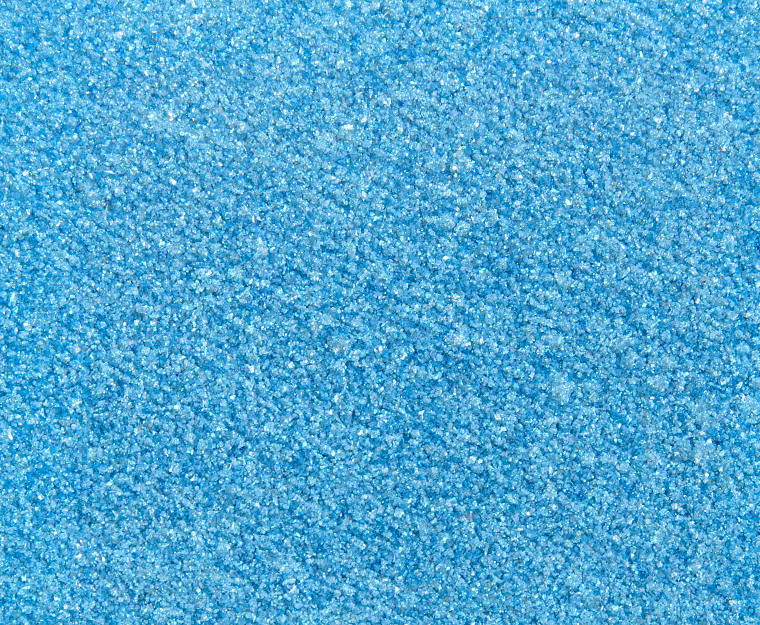
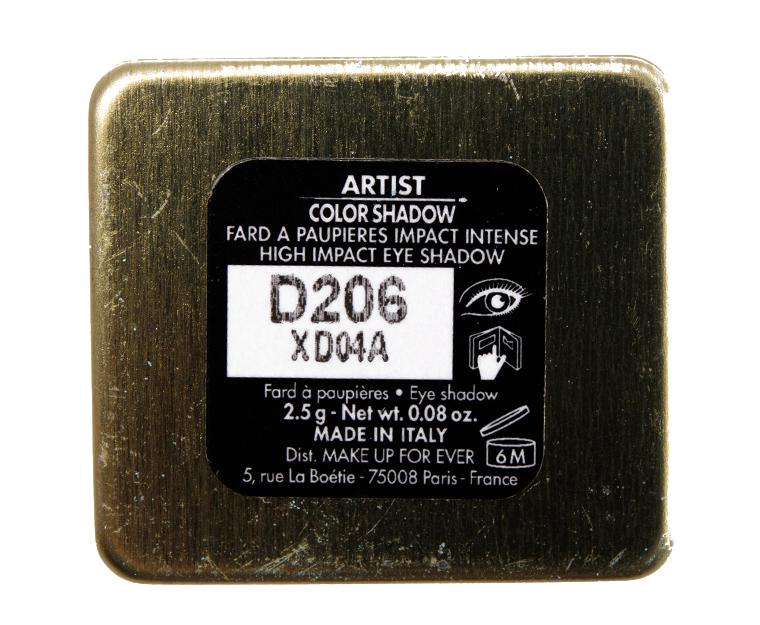
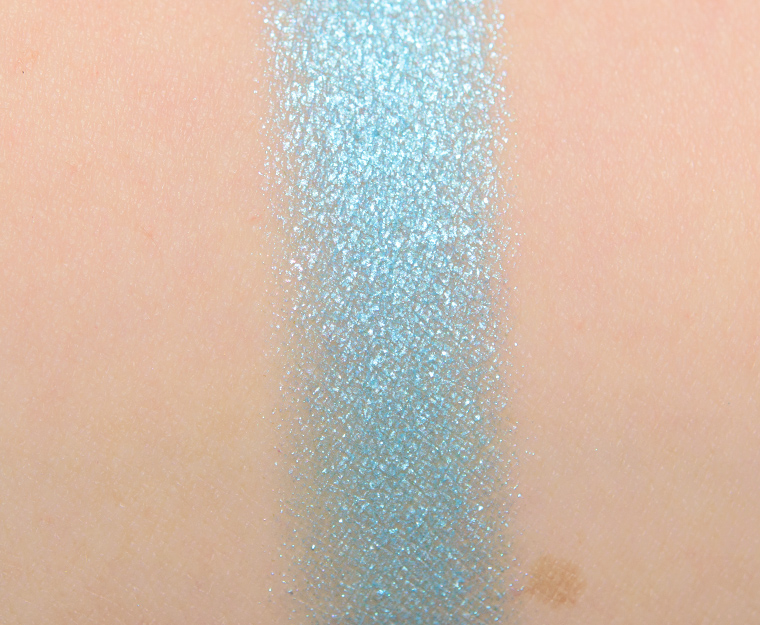
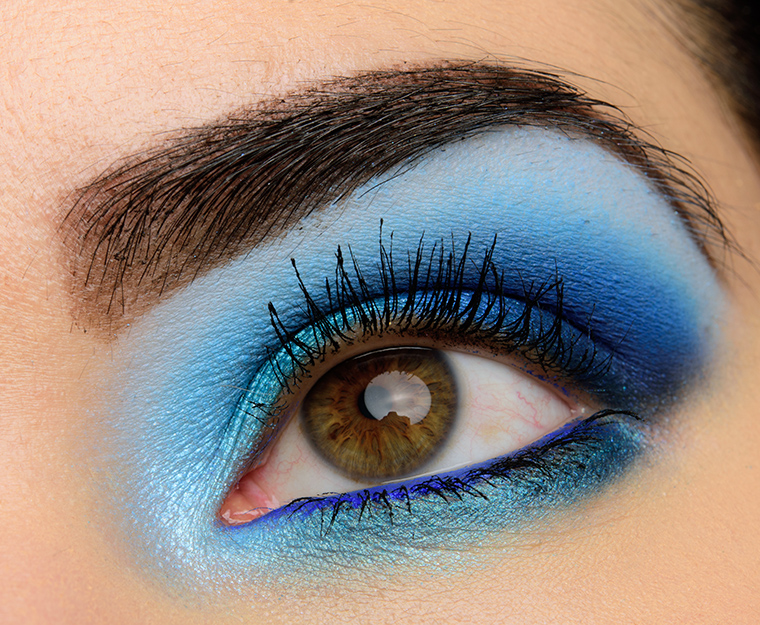
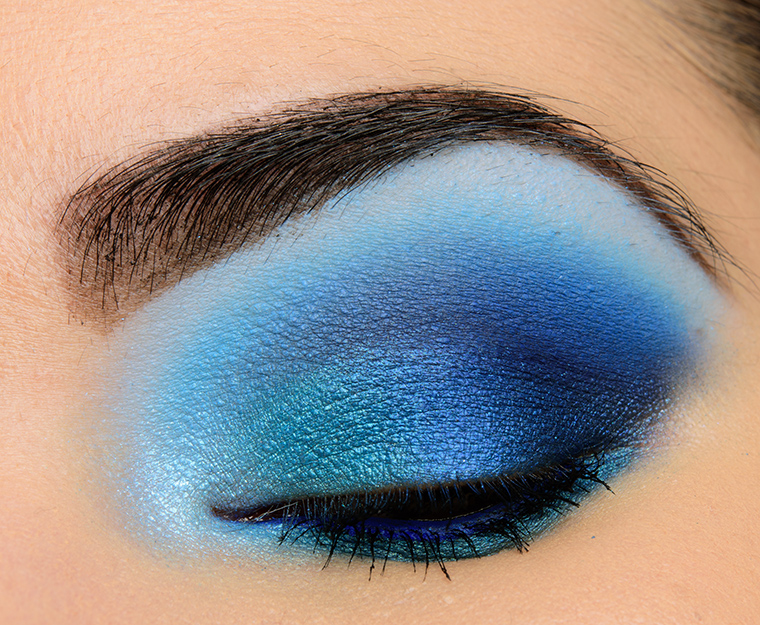









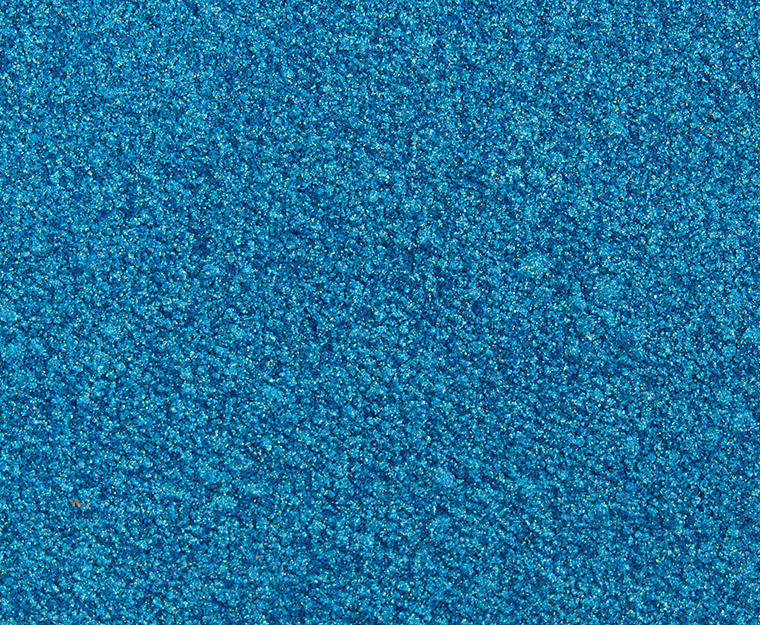
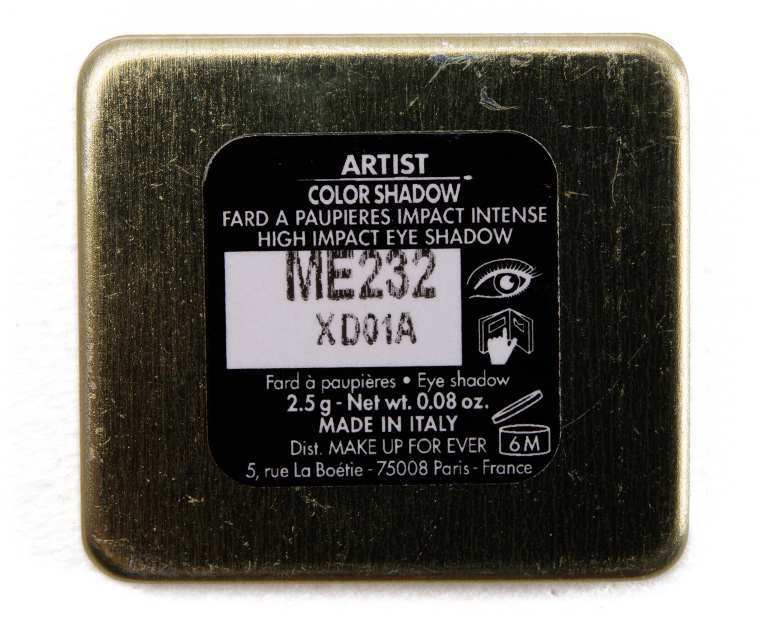







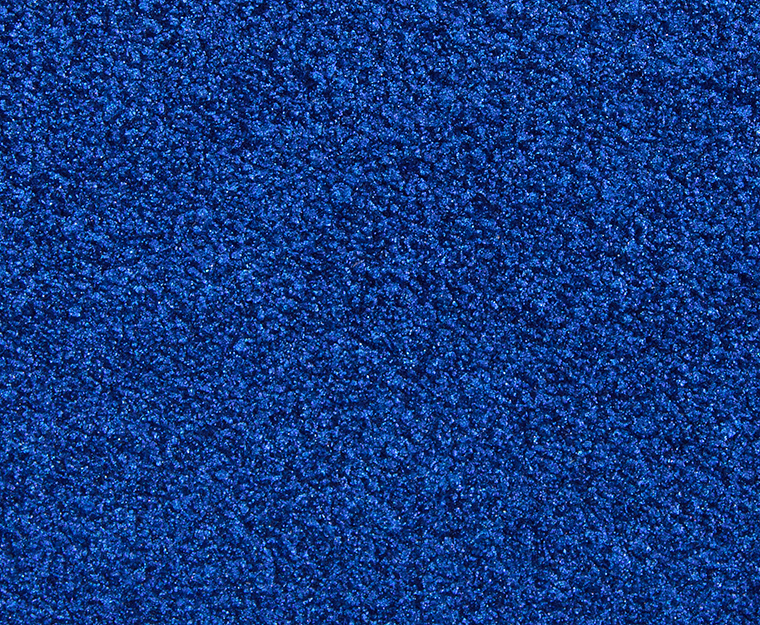
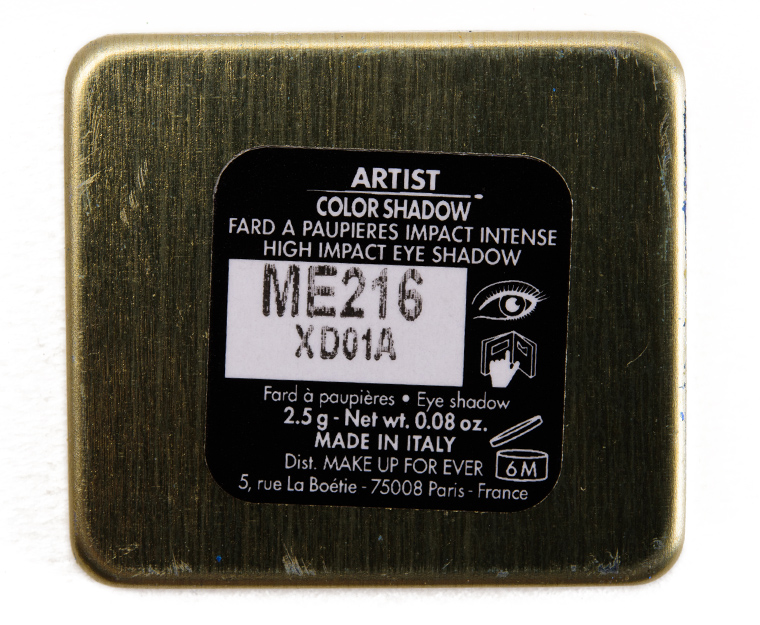







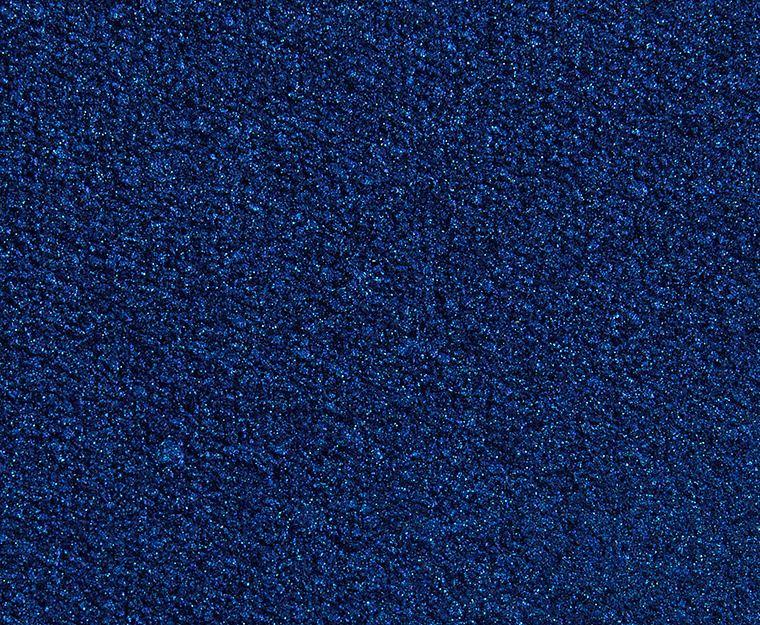
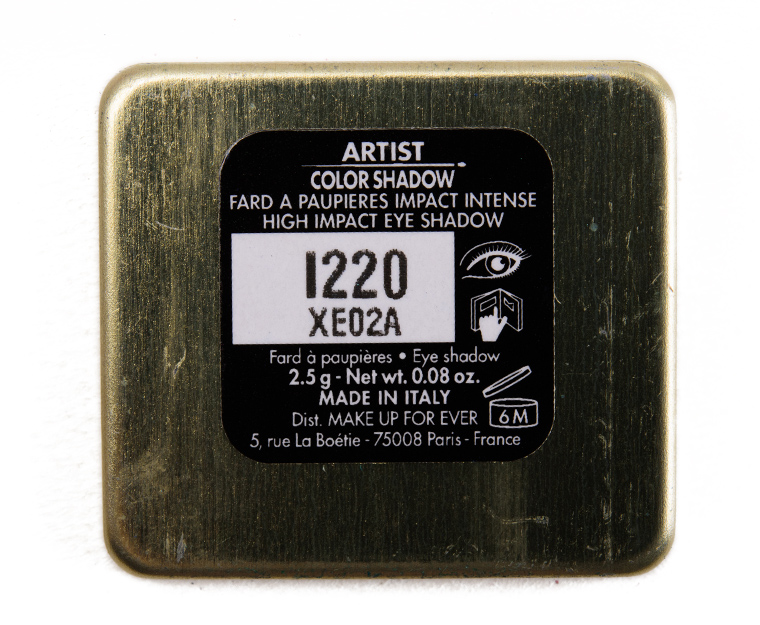
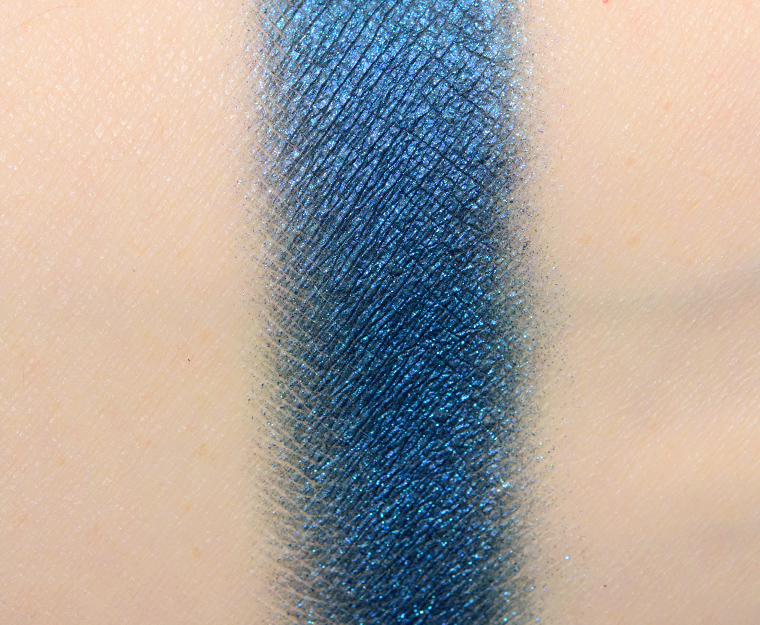






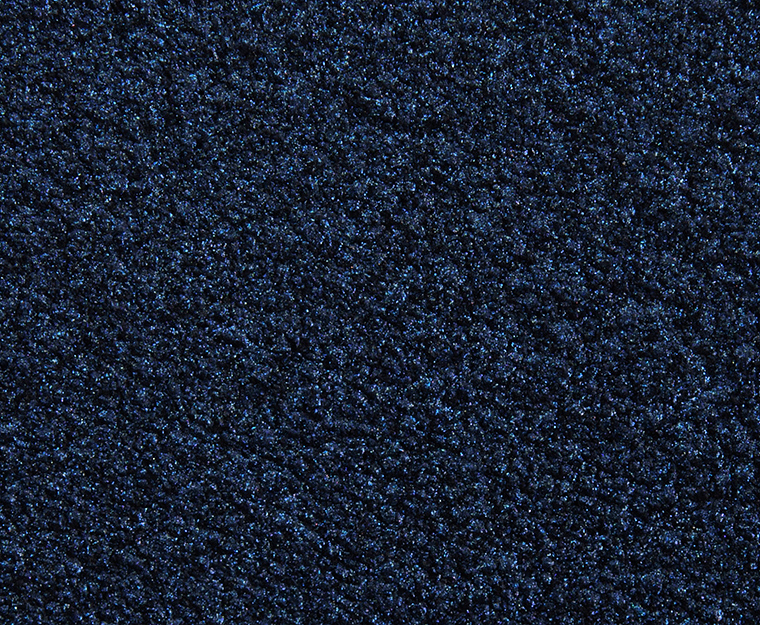
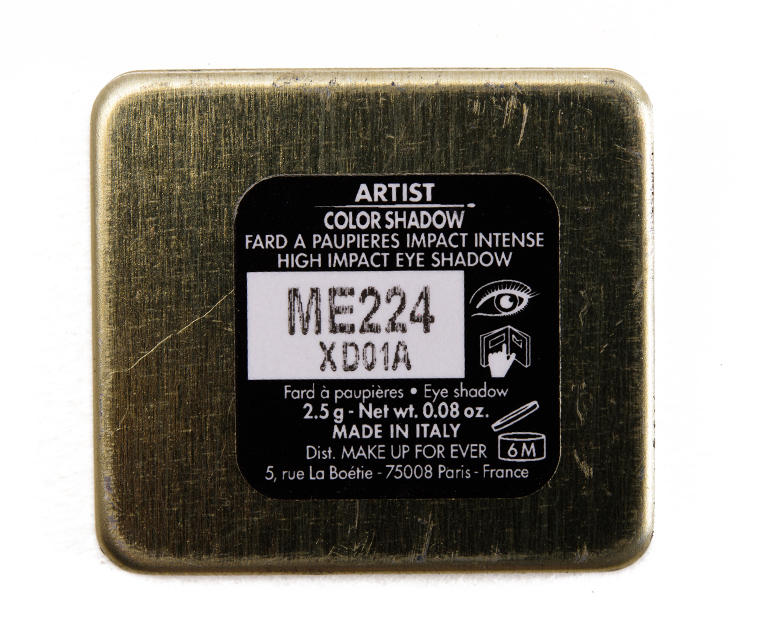
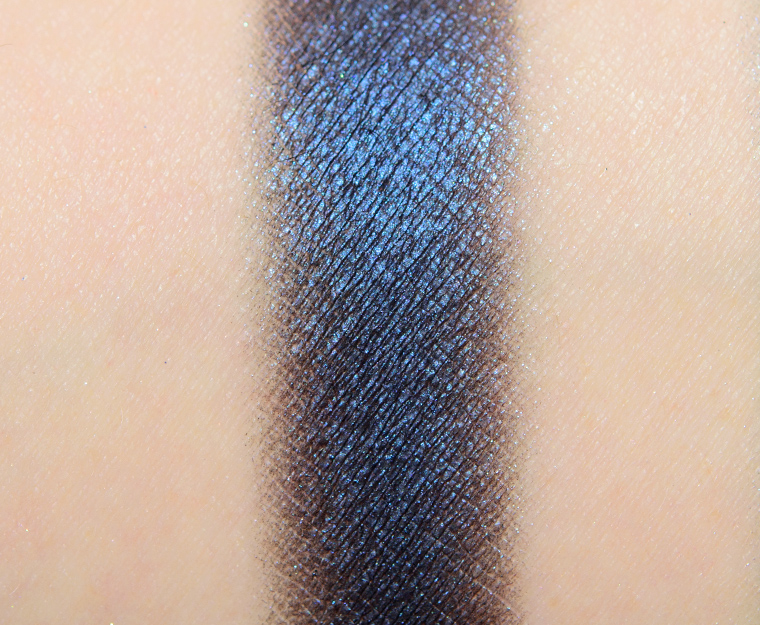






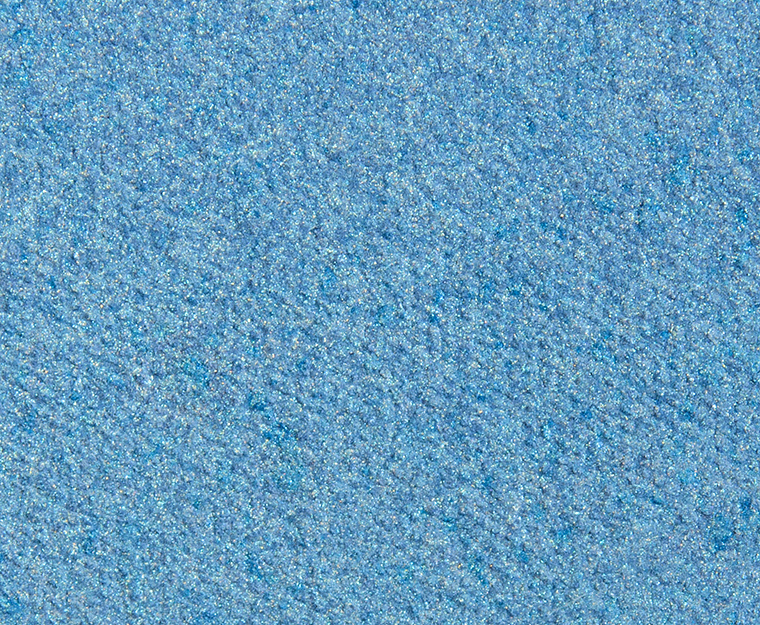
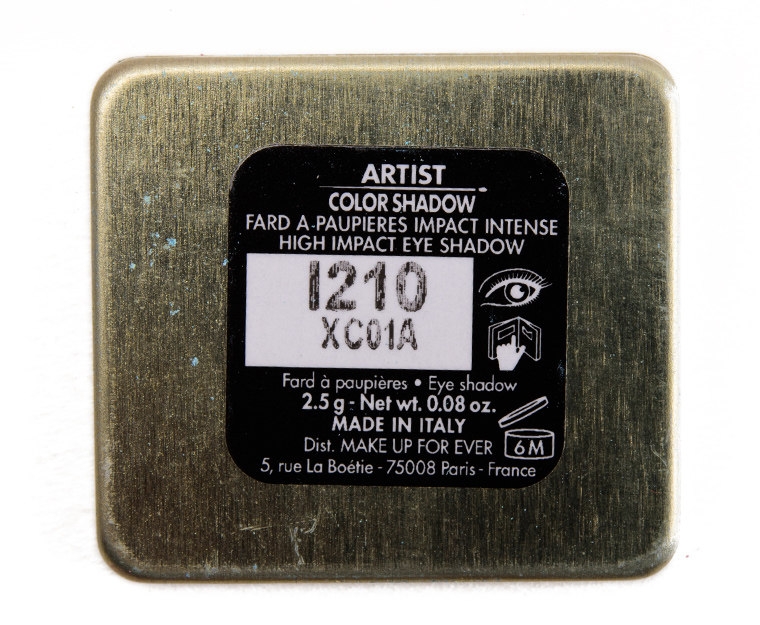







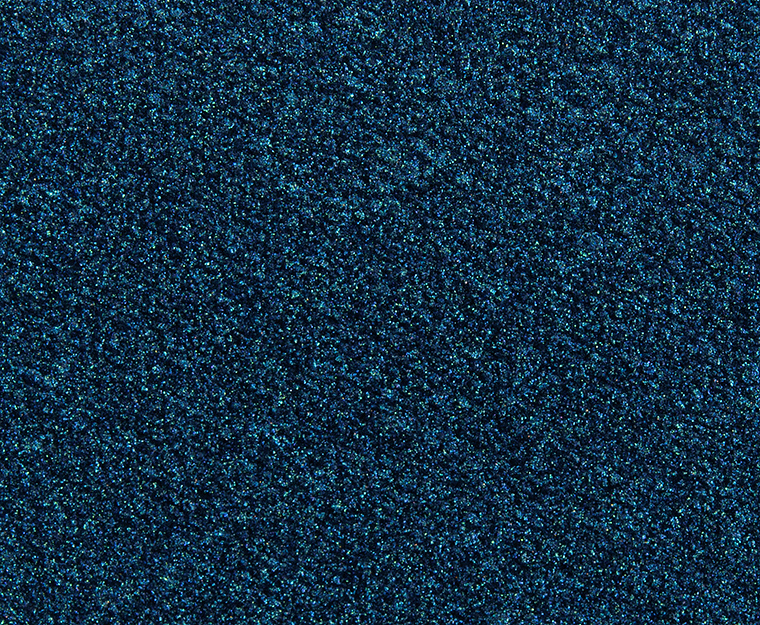
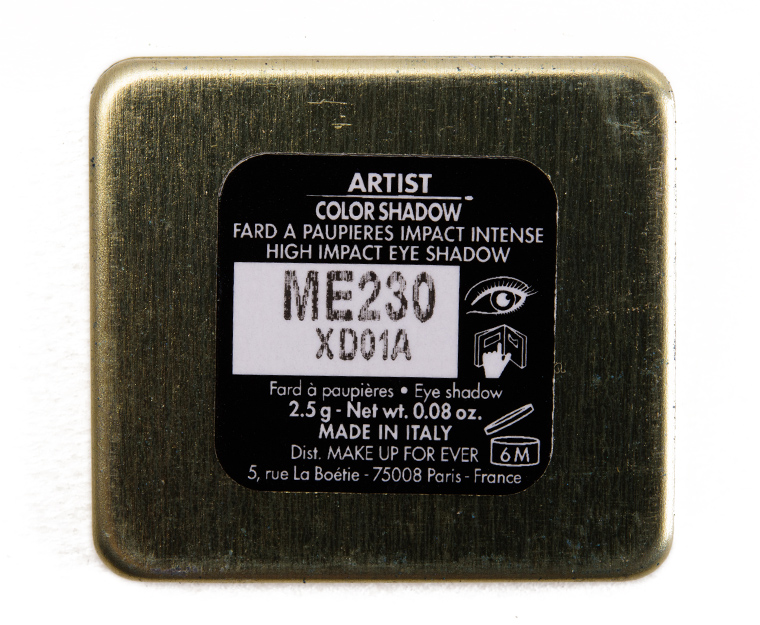
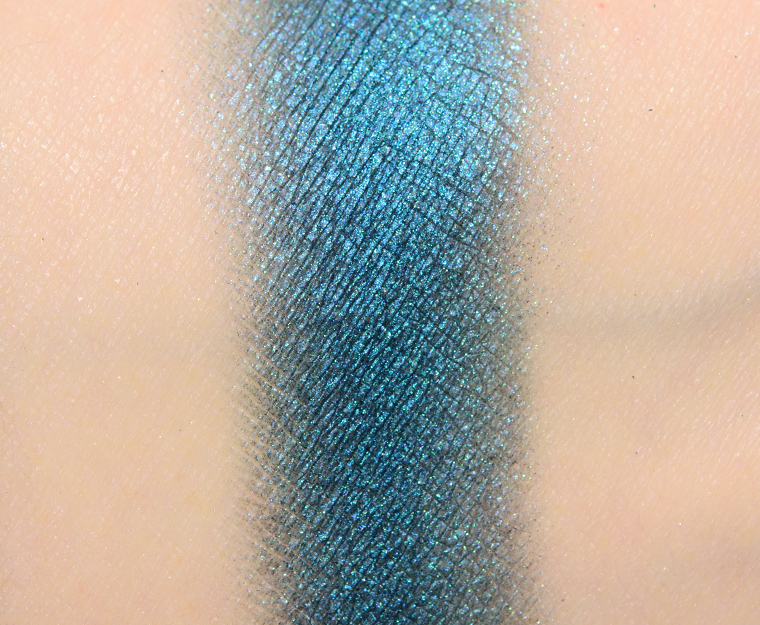






Wow – quite a contrast in ratings for most of them from the original formula. This is a retrograde step for MUFE.
However there are some gorgeous blues here – Peacock, Navy and Sapphire would be my favourites.
The eye look looks photoshoped-ngl. What primer did you use?
No primer!
Now that’s how to rock a blue eye!!!
Haha!
Peacock Blue, Navy and Turquoise all look great. Not to worse for wear with the reformulation. I’m not a huge blue eyeshadow wearer, except for teals and turquoise. Once in awhile, a good navy, too. Still feeling p.o.’d at MUFE for reformulating!
Yeah, it’s a bit of a mixed bag, and I do think they lost some of the “special-ness” they had before. I like a lot of them, but I’m not as excited over them – but that could just be because a lot of similar eyeshadow formulas have come since (the silicone-heavy ones).
You always get such beautiful dimension and depth with your eye looks, Christine. It doesn’t seem to matter how badly a shadow performs; you make it look lovely!
Thank you, Celesta!
I’m happy Turquoise Blue and Peacock Blue both performed well, I had my eye on them.
I LOVE when you bust out a bright blue eye look. Beautiful!
Thank you!
I really love Navy Blue and Peacock Blue and think they would go well together. But I do have MAC Deep Truth and Colourpop Coconut, I should try pairing those.
I love the eye look… deep, calm waters.
Thanks a lot, Ginny!
That blue eye look you did is giving me life??? It is perfection and you didn’t use primer I’m blown away!
Thank you, Dominique!
Your eye look is to die for!
These are still good blues, just not quite as good as before.
Christine, I’m curious to know, after you are done testing out all of the new MUFE eyeshadows, which ones you like the best out of them all. At the end, could you maybe do a round up of your favorite new formulated MUFE e/s’s.
To be honest, there are just too many shades and I tested them back-to-back, so I haven’t thought much about them on a personal level!
This eye look is amazing! I really wish blue eyeshadow looks would make a resurgence. I’m so over warm tones.
Christine, I am OBSESSED with the eye look you created! It’s giving me Rihanna in “Wild Thoughts” vibes!
Christine this has to be the most beautiful blue eye look I’ve ever seen in my life!
Thank you! 🙂
These blues are stunning! Love the eye look you created!
Hi! I’m a first-time commenter, but I’ve lurked off and on for a while. I think the Celestial Blue, Electric Blue, and Peacock Blue shades are gorgeous.
Happy first comment, Nikki!!
Thanks! I think I’m going to like it here!
You made an awesome ocean blue eye! Truly, for a mixed bag of ratings, you made them rock! MUFE should be happy for you making their latest shadows work.